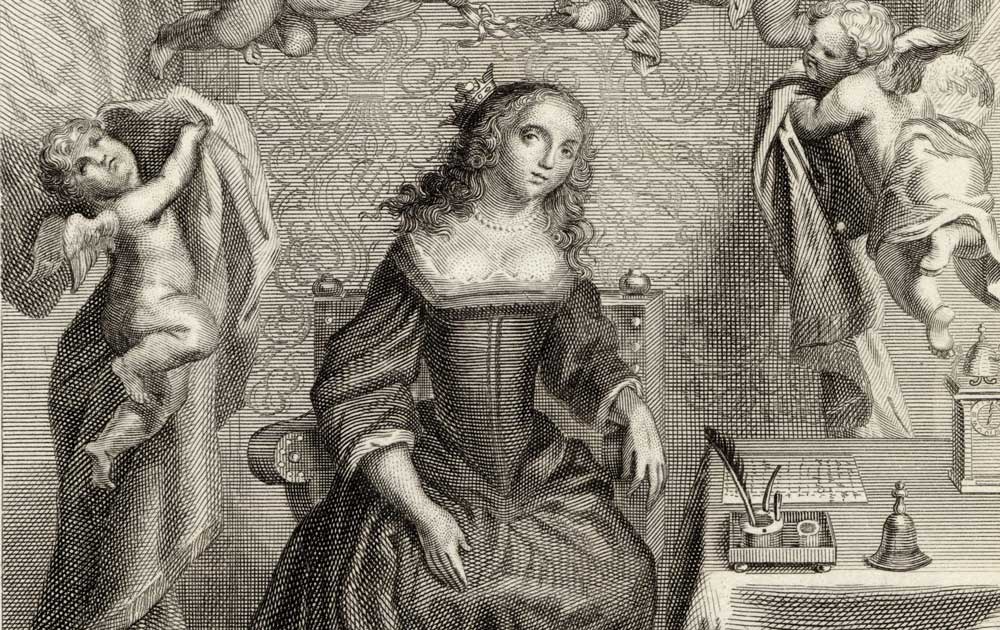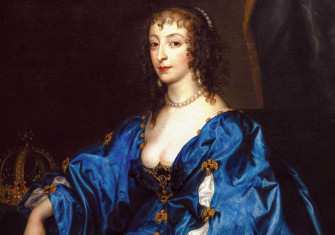This Flammable Isle
The familiar story of the 17th century told through unfamiliar voices.

The Blazing World tells of how the people of England challenged the divine right of kings, toppled tyrants and rejected absolutism by resisting military mobilisation, petitioning and, where necessary, rebelling. And it was, Jonathan Healey suggests, the ‘middling sort’, such as radical polemicists and ordinary soldiers – and even the ‘Oyster wives, and dirty and tattered sluts’, who, according to that new print medium the newspaper, populated a 1643 peace march – propelling these revolutions. Activism begat censorship, but only temporarily, as there was no way to stop debate flaring up in the ever-more numerous coffee houses. England’s intellectual landscape was becoming modern, as markers such as witch trials and the plague seasons loosened their grip on the mindset of the people and democracy beckoned. It might even have taken root as early as 1647, according to Healey, had John Lambert or Thomas Rainsborough risen in Cromwell’s stead.
The 17th century saw five kings sit on England’s throne: one a Scot, the second overthrown and beheaded, the third exiled, restored and succeeded by his brother, a Catholic, and the fifth a Dutchman. Add to this civil wars, a ten-year republic led by a king in all but name and a successful foreign invasion, and your head is spinning even before you contemplate the vast array of new and intertwining religious and political movements that sprung up as if from the very soil. Capturing a century such as this in one breath is not for the faint-hearted, and the book’s pacey discourse tempts the reader down many a rabbit hole before hauling them back into the light with the lure of a new topic. As Healey points out: ‘There is so much that is alien about the seventeenth century … Like the Cheshire Cat, it can tempt us with a familiar smile, but fades away before we can gain the measure of it.’
One of the book’s selling points is that it tells a familiar story through unfamiliar voices – those of the ordinary man and woman who rarely troubled the grand narratives of yore – and thus seeks to write a history ‘from the bottom up’. You might reasonably expect to hear those voices writ large as Healey fuels what is his primary metaphor of a topsy-turvy world. Certainly, one of the most affecting passages – the Cartmel cross-dressing incident which saw two male servants marry in a mock ceremony – is stitched together from a variety of handwritten documents. But such references are rare and archival scholars might take issue with the blurb’s suggestion that Healey is ‘drawing from vast archives’, as he cites a mere 22 manuscripts in their raw, unedited state. His book’s great strength, and most of its arguments, however, stem from primary, printed materials, not least the dazzling array of contemporary pamphlets he wields with aplomb.
Archival issues aside, Healey’s 17th century is one comprised of incidents great and small – it is in some ways less a grand narrative than a patchwork of narratives, each one of which fascinates as it elucidates his primary theme. It is into this patchwork creation of a world turned upside down that Margaret Cavendish’s 1666 utopian fiction – the source of Healey’s title – ought to slide effortlessly. In her Blazing World, the Duchess of Newcastle describes another planet, ESFI, which contemporaries would have recognised as the Stuart kingdoms of England, Scotland, (France) and Ireland. An absolutist monarchy, ESFI remains both attached to, and an integral part of, Earth. Healey’s Blazing World, however, describes the Stuart kingdoms (primarily England) as if they existed in a vacuum until Cromwell’s rise to prominence: so detached, indeed, that Healey describes the pan-European conflict that raged from 1618-48, which was fought by Swedes, Danes, French, Dutch, Spanish, English, Scots and Irish among others, and featured a Stuart princess at its heart, as a ‘German war’.
Healey’s title pays homage to Cavendish as he applauds the movement of ‘science’ from ‘cumbersome manuscripts’ to print, but seems strangely unaware of the fact. He recycles the ‘Mad Madge’ trope in citing Dorothy Osborne’s observation that ‘there [are] many more soberer People in Bedlam’, but omits the context: rather than using the elevated and ‘feminine’ medium of manuscript, Cavendish was publishing in the vulgar and ‘male’ medium of print. She was one of the first women to do so. Cavendish’s poetry, which Osborne also disparages, illustrates her interest in the masculine field of natural philosophy (or ‘science’); her 100 poems bear titles such as ‘What Atomes Make Change’. Like Healey, Cavendish sought to understand the building blocks rather than the buildings, and she had her work printed so that it could gain entry into a masculine world: the university libraries of Cambridge, Oxford and Leiden. A woman veering so far from the ‘natural order’ fits so neatly into Healey’s overarching argument of a world turned upside down, with a rapidly expanding publishing industry ready to aid and incite revolution, that it comes as a surprise that, by merely accentuating her eccentricity, he reduces her to nothingness.
Ultimately, Healey argues that the 17th century was forged not by monarchs but by the people. When Charles II is remembered, therefore, it should not be for ‘his parties’, but for ‘the Quakers who died in his prisons or the Scots Presbyterians who were tortured by his soldiers, or the slaves who suffered at the hands of his Royal African Company’. This is true, as is Healey’s point that we have spent too long viewing the century through the caricatures bequeathed to us by ‘great man’ history – his point might have been stronger had he refrained from recycling these caricatures himself.
When one narrates such a century with concision, bold statements are necessary and Healey can be forgiven those occasions when he misses his mark. An unapologetic narrative history that draws the focus from the Tudors and onto the fascinating Stuart age can only help to freshen the air of current historical discourse. In this sense, Healey’s book is blazing trails, just as the Great Fire of London – the other ‘blazing world’ whose influence looms large over every page – ushered in the new age that it chronicles.
The Blazing World: A New History of Revolutionary England
Jonathan Healey
Bloomsbury 512pp £30
Buy from bookshop.org (affiliate link)
Nadine Akkerman is Professor in Early Modern Literature and Culture at Leiden University.






